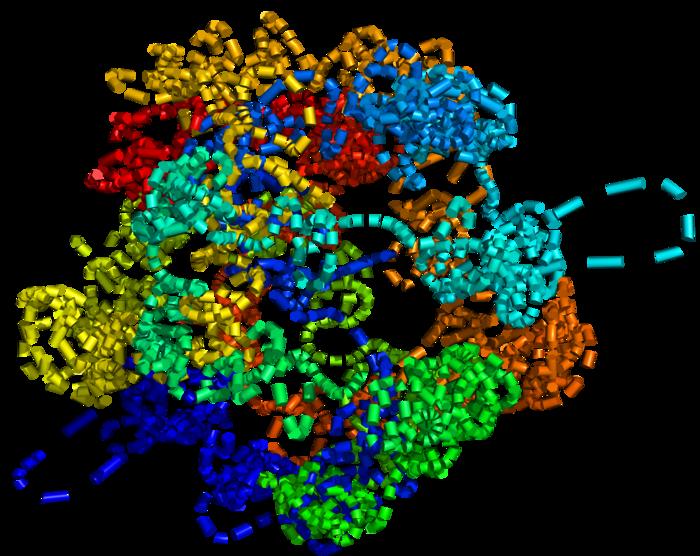In a groundbreaking advance set to reshape genetic and biomedical research, scientists at the University of Missouri have engineered an innovative artificial intelligence tool capable of accurately predicting the three-dimensional configuration of chromosomes within individual cells. Unlike traditional approaches, which aggregate data across millions of cells, this novel AI-driven methodology unveils the intricate architecture of chromosomes on a cell-by-cell basis, offering unprecedented insights into the regulatory mechanisms governing gene expression.
Chromosomes serve as the vital storage units of DNA within cells, and their spatial folding is integral to both compaction and functional regulation. Each individual cell contains approximately six feet of DNA, which must be intricately folded into a compact, orderly structure to fit within the nucleus. However, this folding is not merely a spatial necessity; it also determines the activation or silencing of specific genes. Misfolding or abnormal chromatin organization is strongly implicated in various disorders, notably cancer and developmental diseases. Understanding the precise 3D arrangement of chromosomes is therefore essential for decoding genomic regulation and cell function.
Existing methods typically analyze chromosome structures by pooling data from vast populations of cells, effectively masking cell-specific variability. This averaged data fails to capture the heterogeneity in chromosomal folding that can exist even among genetically identical cells in the same tissue, obscuring nuanced differences that influence gene activity and cellular behavior. The University of Missouri team, led by graduate student Yanli Wang and professor Jianlin “Jack” Cheng, has addressed this critical limitation by developing an AI model that operates at single-cell resolution.
.adsslot_dDyJX9vcpm{width:728px !important;height:90px !important;}
@media(max-width:1199px){ .adsslot_dDyJX9vcpm{width:468px !important;height:60px !important;}
}
@media(max-width:767px){ .adsslot_dDyJX9vcpm{width:320px !important;height:50px !important;}
}
ADVERTISEMENT
The AI framework employs advanced SO(3)-equivariant graph neural networks (GNNs), a cutting-edge machine learning architecture adept at processing data that is rotationally invariant, such as 3D spatial structures. This equivariance enables the AI to recognize chromosomal folding patterns regardless of their orientation within the cell nucleus, a major challenge in biological imaging data. The model is trained on single-cell Hi-C data, a technique that captures chromatin interaction frequencies, yet is notoriously sparse and noisy at the single-cell level. The AI excels at discerning meaningful patterns amid this inherent noise, effectively reconstructing detailed 3D chromosome structures even when the input data is incomplete or ambiguous.
What sets this AI apart from prior deep learning efforts is its robustness and improved accuracy. Comparative analyses reveal that the model outperforms previous state-of-the-art methods by more than two-fold in predicting human single-cell chromosomal arrangements. This leap in precision is attributable to the incorporation of SO(3)-equivariance into the graph neural network design, combined with a novel approach to modeling chromatin contacts as spatial graphs, enhancing the AI’s capacity to infer the genuine physical folding of chromosomes.
The biological implications of these advancements are profound. Since chromosomal topology deeply influences gene expression programs by controlling the accessibility of genetic loci, the ability to reconstruct these three-dimensional patterns at single-cell resolution opens new avenues for research into cellular differentiation, development, and disease progression. Researchers can now dissect how subtle variations in chromosome folding within individual cells contribute to phenotypic diversity and pathology.
Furthermore, the research team has generously made this modeling software freely accessible to the global scientific community, facilitating widespread adoption and integration into genomic studies. This democratization of technology promises to accelerate discoveries in genetics, molecular biology, and medicine by enabling precise 3D chromosomal analyses on diverse cell types and disease models.
Looking ahead, the scientists are ambitiously working to refine the AI tool to generate even higher-resolution models that reconstruct complete genome architectures within cells. Achieving full-scale 3D genome mapping would provide the most detailed spatial blueprint of genetic material known to date, potentially revolutionizing personalized medicine, cancer diagnostics, and our overarching understanding of genome biology.
According to lead author Yanli Wang, the capacity to “see” chromosomes in these intricate three-dimensional configurations reveals the dynamic nature of the genome within the cellular environment. Professor Jianlin Cheng emphasizes the transformative value of such detailed structural insights, highlighting how structural heterogeneity among cells can underpin critical biological functions and disease mechanisms that were previously obscured by averaging data.
The study, titled “Reconstructing 3D chromosome structures from single-cell Hi-C data with SO(3)-equivariant graph neural networks,” was published in the journal NAR Genomics and Bioinformatics on March 22, 2025. This publication outlines the methodological innovations and computational frameworks used to achieve these unprecedented modeling capabilities.
As the field of genomics continues its rapid evolution, integrating machine learning techniques with experimental biology stands as a paradigm shift. This AI tool exemplifies how interdisciplinary approaches can overcome longstanding obstacles—such as data sparsity and orientation variability—ushering in a new era of precision genomic research. The ramifications extend beyond fundamental biology, offering promising potential for improving disease diagnosis, monitoring, and therapeutic design based on accurate cellular genomic architectures.
The capacity to reconstruct and analyze chromosome folding within individual cells marks a significant milestone in deciphering the complex relationship between genome structure and function. By illuminating the cellular-level variability and its consequences, this breakthrough AI tool not only advances scientific understanding but also lays the groundwork for personalized medical interventions tailored to the unique genomic landscapes of individual cells.
Subject of Research: Reconstruction of 3D chromosome structures in single cells using AI and graph neural networks.
Article Title: Reconstructing 3D chromosome structures from single-cell Hi-C data with SO(3)-equivariant graph neural networks
News Publication Date: 22-Mar-2025
Web References:
https://doi.org/10.1093/nargab/lqaf027
Image Credits: Photo courtesy Yanli Wang
Keywords: Life sciences, Cell biology, Genetics, Human genetics, Medical genetics, Genetic disorders, DNA sequencing, Cancer genomics, Genome organization, Genetic testing, Molecular genetics, Chromosomes, Chromosome structure, Health and medicine, Diseases and disorders, Artificial intelligence, Computer modeling, Three dimensional modeling
Tags: 3D chromosome architectureadvancements in molecular biology techniquesAI in genetic researchchromatin organization and disordersgene expression regulationimplications of chromosomal misfoldingindividual cell DNA structureinnovative tools in biomedical researchprecision genomics with AIsingle-cell analysis techniquesspatial DNA folding mechanismsUniversity of Missouri AI breakthrough





